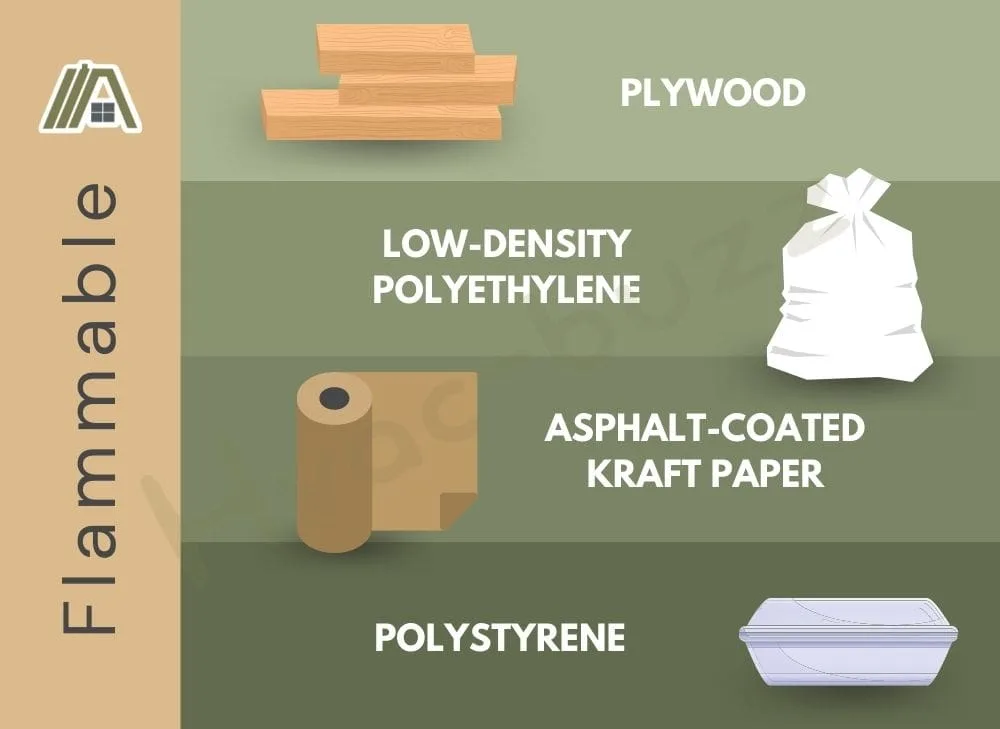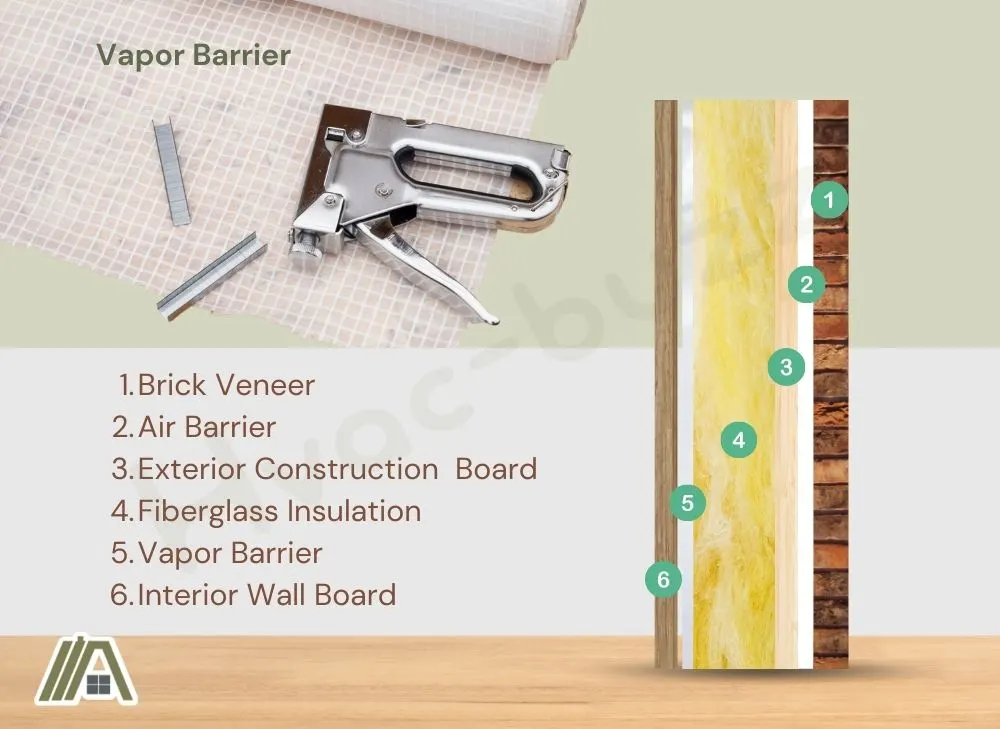Dryer ducts get hot due to the exhausted air they carry to the outdoors. The ductwork also runs through a lot of spaces and can, therefore, come into contact with many different materials. Heat can be risky with many of these materials, but others are perfectly fine to be in contact with the dryer ducts.
This article should save you some time and put your mind at ease by explaining the factors to consider when setting up dryer vents around vapor barriers.

Vapor barriers can come into contact with dryer vents. There are no code prohibitions of this, and the dryer ducts are not likely to reach temperatures high enough to ignite vapor barrier materials, even if they were not coated in flame-retardant chemicals, which they commonly are.
What Are Vapor Barriers Made Of?
Vapor barriers (more accurately known as vapor diffusion retarders) are typically available as coatings or membranes made of flexible, thin materials, or otherwise thicker sheet materials.
These materials may include aluminum foil, polyethylene plastic sheets, extruded polystyrene or foil-faced foam board insulation, plywood, asphalt-coated kraft paper attached to one side of fiberglass batts, vapor retarder paints, or metalized film, among others.
Of the materials mentioned above, some, such as plywood, low-density polyethylene, asphalt-coated kraft paper, and polystyrene, are flammable.

Polystyrene will start to melt at 212 ºF and will ignite at 680 ºF, while polyethylene will ignite around 439 ºF, paper around 425 °F to 481 °F, and plywood will start to char over time at around 200 ºF to 320 ºF.
These temperatures are estimates and will vary depending on factors such as the density or thickness of the materials.
Aluminum will remain solid at temperatures up to 200 °F but should only ignite at temperatures around 1200 °F.
Vapor retardant paints shouldn’t be flammable, but this depends on what they are made of. Water-based paints can be flame-retardant.
However, even if a material is flammable, it may be treated with fire-retardant chemicals such as boric acid to reduce the risk of ignition.
Dryer Duct Surface Temperature
Dryer duct vent surface temperatures can vary depending on factors such as room temperature, restrictions to airflow in the vents (as a result of lint buildup), and the size and dampness of the load in the dryer.
The position along the vent will also affect surface temperature readings.
Generally, you can expect the interior surface of the dryer vent at the exterior wall to range from 113 ºF to 130 °F.
The interior surface temperature at the exterior wall vent outlet, however, is typically between 100 ºF and 145 °F.
The temperature of the air in the vent at the dryer should usually lie between 125 ºF and 135 °F.
Temperatures above 392 °F at any part of the vent are considered highly abnormal and unsafe and should be addressed immediately.
Pre-installed temperature control systems near dyer exhaust vents should prevent abnormal heat buildup.
Additionally, proper maintenance of dryers, such as through the removal of lint, should lower the risk that vents will become too hot.
Is It Safe for Dryer Vents to Touch Vapor Barriers?
Vapor barriers seal spaces through which ducting systems commonly run.

It should be safe for dryer vents to touch vapor barriers because the surface temperature doesn’t normally exceed the temperatures at which flammable vapor barriers ignite.
For example, if the surface temperature of a dryer vent ranges from 100 ºF to 145 °F, and the temperature at which plywood starts to char is around 200 ºF to 320 °F (but only ignites at higher temperatures), there is at least a 55 °F temperature gap before you need to be concerned.
This is without taking into consideration that some vapor barriers may be treated with fire-retardant chemicals.
To be safe, though, it is important to ensure that your dryer and dryer vents are well-maintained to reduce temperature buildup.
If the vents do have to touch the vapor barrier, as an extra precaution, you could ensure that less flammable or heat-resistant materials are used.
What Does the Code Say?
The regulations for venting dryers can be found in Section M1502 of the International Residential Code (IRC).
Within this section, there is no mention in these regulations about preventing contact between vapor barriers and dryer ducts and vents.
As the code is developed to ensure the safety of residential buildings, it shouldn’t be an issue to allow contact between vapor barriers and dyer vents.
Possible Exception
While the IRC does not explicitly indicate that you should not let vapor barriers and dryer vents touch, Section M1502.1 does state that dryers should be vented according to manufacturer instructions.
Hence, if the manufacturer says that contact should be avoided, you need to follow this to be code-compliant.
Sources
https://firefighterinsider.com/aluminum-foil-flammable/
https://en.wikipedia.org/wiki/Vapor_barrier
https://firefighterinsider.com/styrofoam-flammable/
http://www.tayloredge.com/reference/Science/ignition.html
https://omnexus.specialchem.com/selection-guide/polyethylene-plastic
http://www.tayloredge.com/reference/Science/ignition.html
https://inspectapedia.com/Appliances/Clothes-Dryer-Temperatures.php
https://inspectapedia.com/Appliances/Clothes-Dryer-Safety-Bonaccorso-CPSC_2012.pdf
https://fireproofdepot.com/what-temperature-does-paper-burn/
